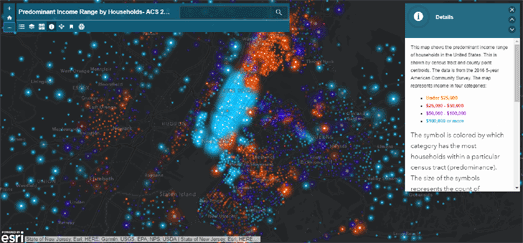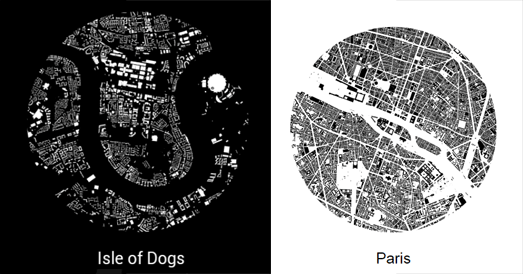Сообщения
Сообщения за декабрь, 2018
The Most Popular Maps of 2018
- Получить ссылку
- X
- Электронная почта
- Другие приложения
New Year's Eve Around the World
- Получить ссылку
- X
- Электронная почта
- Другие приложения
The Global Prosperity Index 2018
- Получить ссылку
- X
- Электронная почта
- Другие приложения
Santa Tracker
- Получить ссылку
- X
- Электронная почта
- Другие приложения
The True Size of Countries
- Получить ссылку
- X
- Электронная почта
- Другие приложения
Where New Jersey Police Use Force
- Получить ссылку
- X
- Электронная почта
- Другие приложения
The Map of Yugoslavian War Victims
- Получить ссылку
- X
- Электронная почта
- Другие приложения
America's Richest Neighborhoods
- Получить ссылку
- X
- Электронная почта
- Другие приложения
Santa's Digital Delivery Management System
- Получить ссылку
- X
- Электронная почта
- Другие приложения
Mapping the Wolf at Your Door
- Получить ссылку
- X
- Электронная почта
- Другие приложения
Mapping Fire Risk in California
- Получить ссылку
- X
- Электронная почта
- Другие приложения
The Geography of Christmas Dinner
- Получить ссылку
- X
- Электронная почта
- Другие приложения
An Atlas of American Gun Violence
- Получить ссылку
- X
- Электронная почта
- Другие приложения
The London Murder Map
- Получить ссылку
- X
- Электронная почта
- Другие приложения
The Ancestry Map of America
- Получить ссылку
- X
- Электронная почта
- Другие приложения
How to Make a Map Poster
- Получить ссылку
- X
- Электронная почта
- Другие приложения
Breaking Through the Bronze Ceiling
- Получить ссылку
- X
- Электронная почта
- Другие приложения
Eating the World
- Получить ссылку
- X
- Электронная почта
- Другие приложения
Where Sharks Attack
- Получить ссылку
- X
- Электронная почта
- Другие приложения
Exploring the Life of Maimonides
- Получить ссылку
- X
- Электронная почта
- Другие приложения
The Racial Dot Map of Australia
- Получить ссылку
- X
- Электронная почта
- Другие приложения
US Average Life Expectancy
- Получить ссылку
- X
- Электронная почта
- Другие приложения
The Place-Names of America
- Получить ссылку
- X
- Электронная почта
- Другие приложения
Where's the Plaque?
- Получить ссылку
- X
- Электронная почта
- Другие приложения
The Euler Spiral Map Projection
- Получить ссылку
- X
- Электронная почта
- Другие приложения
Where You Should Worry About Earthquakes
- Получить ссылку
- X
- Электронная почта
- Другие приложения
Making Play Maps for Children
- Получить ссылку
- X
- Электронная почта
- Другие приложения
Where is the News?
- Получить ссылку
- X
- Электронная почта
- Другие приложения
The World's Population Pyramids
- Получить ссылку
- X
- Электронная почта
- Другие приложения
How Religious is Europe?
- Получить ссылку
- X
- Электронная почта
- Другие приложения
The Queensland Bushfires from Space
- Получить ссылку
- X
- Электронная почта
- Другие приложения
The Most Sung About Locations
- Получить ссылку
- X
- Электронная почта
- Другие приложения
Dangerous Biking in LA
- Получить ссылку
- X
- Электронная почта
- Другие приложения
Global Wind & Rain
- Получить ссылку
- X
- Электронная почта
- Другие приложения
The Most Densely Populated Areas in Europe
- Получить ссылку
- X
- Электронная почта
- Другие приложения
The Autocomplete Map of the USA
- Получить ссылку
- X
- Электронная почта
- Другие приложения
Russia's Attack on the World's Democracies
- Получить ссылку
- X
- Электронная почта
- Другие приложения
Building on Britain
- Получить ссылку
- X
- Электронная почта
- Другие приложения
Discover Your 2018 Climate Twin
- Получить ссылку
- X
- Электронная почта
- Другие приложения
The Flood Risk Map of England
- Получить ссылку
- X
- Электронная почта
- Другие приложения
Comparing Countries by Size
- Получить ссылку
- X
- Электронная почта
- Другие приложения
Transmarine Dream
- Получить ссылку
- X
- Электронная почта
- Другие приложения
Flooding Models for the Netherlands
- Получить ссылку
- X
- Электронная почта
- Другие приложения










































